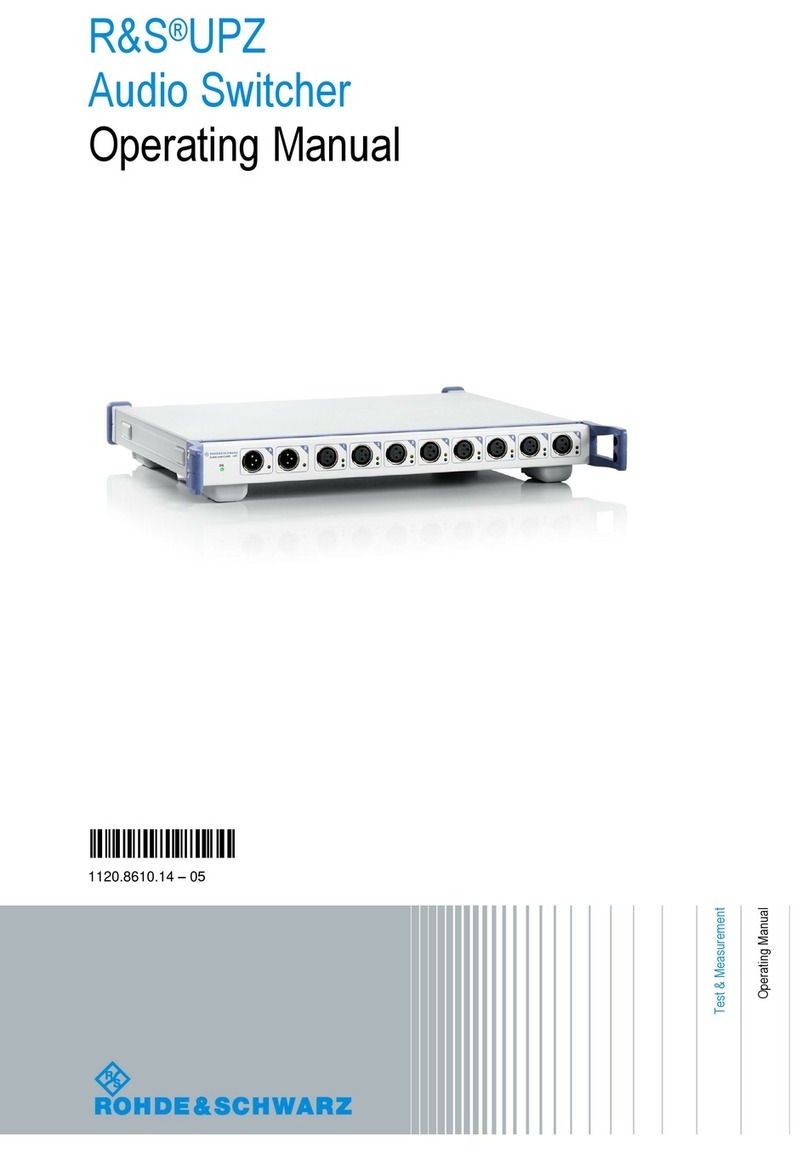
Key Features
R&S®OSP
10Getting Started 1178.7117.02 ─ 03
Backward compatibility details
●The new switch units R&S OSP220/230/320 are mechanically and elec-
trically fully compatible with all legacy standard hardware modules and
new modules, described in the User Manual
●The new firmware is also compatible with all these modules
However, the following limitations in compatibility apply:
●In a master-slave setup, you cannot mix legacy switch units with new
switch units. Differences in communication prevent a combination of the
two generations: The legacy switch units were interconnected by a
CAN-bus system, while the new switch units are interconnected via
Ethernet (LAN).
●Consequently, also the commands for configuring a master-slave setup
of new switch units differ from the commands for the legacy units.
●The new firmware addresses the modules by their connectors M01 to
M16 in a switch unit.
– In setting commands, the firmware alternatively accepts addressing
the modules by A11 A12 or A13, according to the 3 module connec-
tor buses in a legacy switch unit.
– In query commands, the firmware per default returns module num-
bers in Mxx format. However, you can use the command
CONFigure:COMPatible[:MODE] to let the firmware return mod-
ule numbers in A1x format, according to the legacy syntax. Refer to
the User Manual for details on this command.
As the legacy units had 3 module connectors, only, numbers beyond
A11, A12 and A13 make no sense, although the new module (connec-
tor) numbers run up to M16.
The available switch modules are described in the User Manual.
For a detailed specification of the R&S OSP, refer to the data sheet, available for
download at www.rohde-schwarz.com/brochure-datasheet/osp.
Note that switch units are no measurement instruments. They support effi-
cient working with test and measurement setups, but switch units never dis-
play any measurement results or power levels.




























